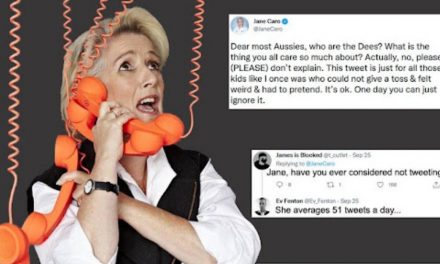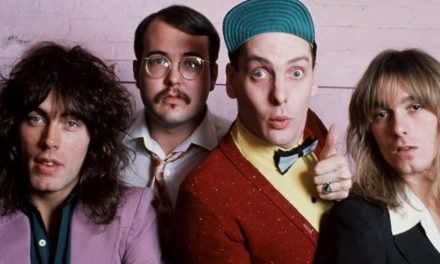Women and their supporters held rallies around the country on March 15 calling for an end to gendered violence
Considerable criticism has been levelled at Prime Minister Scott Morrison for his reliance on the counsel of his wife, Jenny, to help him empathise for the experience of women. Should he really have to consider a female staffer’s alleged rape and lack of subsequent support as if it were happening to one of his daughters to be able to empathise?
However, the PM is not unique in empathising more with people with whom he identifies closely with. Many of us experience a proximity bias. We feel more for those we perceive as closer to us.
This is called inter-group empathy. We experience more empathy for people who sit within the same groups as us, compared to those who sit in groups outside of ours.
We can see this in many examples: the empathy we feel, the amount of news we consume and the direct actions of support we take when a natural disaster happens in our country, or in a country where people look, sound and live like us, compared to our attention and actions when events occur in parts of the world and to people with whom we’re not as familiar.
Even within our own country, we follow stories about people from our own cultural and socio-economic backgrounds more than people who live very differently to us.
If someone is like us, then we have more empathy, pay more attention and push for action. Rather than seeing our commonality with someone as a human, we have focused on the categories that differentiate us. We’ve separated from their humanness and see them instead as an “other”.
The problem with this is that any leader, especially a Prime Minister, needs to be able to lead a diverse community, many of whom they may not have a direct line of comparison with. They need to be able to have empathy with experiences very unlike their own if they have any hope of representing us fairly and adequately.
Empathy is about taking someone else’s perspective and seeing the world through another person’s eyes, without judgement, without trying to change them, solve their problems, or save them (especially if this is done to remove your own discomfort).
The good news is that both listening and empathy are skills that can be learned. But it requires us to be willing to reflect, to acknowledge where we’ve been wrong, and to change.
African-American poet Maya Angelou said: “Do the best you can, until you know better. And then when you know better, do better.” But knowing better is not a passive process.
If we demonstrate less empathy to people who are “other” than us, achieving equality remains a lofty goal. We don’t like to think of ourselves as racist, homophobic, sexist, or ableist. It’s uncomfortable to think of ourselves in that way. But given the fact that there is still so much exclusion in our society, in our workplaces, in our services, some of us simply must be.
And as uncomfortable as this is to admit about ourselves, it’s even more uncomfortable for the people who are on the receiving end of it.
If we haven’t had first-hand experience of the various barriers, both invisible and visible, that maintain exclusion, in our communities and workplaces, it is incumbent on us to learn, to seek the information, to understand that experience so that we can do better.
Diversity and inclusion isn’t a gender and particularly not a binary gender issue, although that is the shortcut lots of people take. We need to consider gender and sexually diverse people, people of colour, people with differing abilities, neurodiverse people, and people living with mental health issues.
In 1989, (current) Columbia law professor Kimberly Crenshaw coined the term intersectionality. Crenshaw describes that identity is multi-faceted. And that those various facets interact to create a different experience than if they existed independently.
As a woman, I’ll experience certain levels of bias and discrimination in environments. As a woman with chronic health issues and disability, I might experience additional barriers and discrimination. If I was a woman of colour, if I was a woman of colour with a disability, if I was a trans woman…
The different identities that we have interact to create more complex experiences of exclusion. Intersectional experiences need to be considered, diverse voices need to be heard, and needs must be responded to.
PLEASE HELP US CONTINUE TO THRIVE BY BECOMING AN OFFICIAL FOOTYOLOGY PATRON. JUST CLICK THIS LINK.
How is the current discrimination, prejudice and abuse continuing? We have laws about non-discrimination, workplace obligations around psychological safety, and the business case for inclusion is clear.
We can hypothesise that there must be other reasons for exclusion to perpetuate in 2021. We can start by examining what the barriers are. And who is benefiting from them being maintained? Whose interests are being served by exclusion? Whose voices are being heard? And whose aren’t? Who’s in the room? Who’s not? And why.
These questions uncover the invisible structures that sustain exclusion. And if we’re not willing to have those difficult conversations and examine those structures, we’re not going to see meaningful improvement.
Where there is a significant gap in equality, it is tempting to want to jump in and demonstrate your commitment. However, don’t take a box-ticking approach to inclusion and equality.
Symbols, such as having a float in the Pride Parade, putting on an International Women’s Day event, celebrating Harmony Week, are important. But they’re not enough without intersectional systemic and cultural change.
Without this, they risk amounting to nothing more than virtue signalling. And pretty quickly, they’ll start to erode trust and belief in your narrative. People will not join you in these events because they will not trust that your intentions are genuine.
Inclusion cannot be done to people. It needs to be done with people. People are not served by a patronising approach to support inclusion. People do not need you to save them. They need you to get out of their way. They need you to stop sustaining the barriers that have protected you and excluded them.
The first step towards genuine inclusion is to listen loudly.
Listening means finding new voices with which to engage. It doesn’t mean expecting it’s someone’s obligation to educate you about the barriers they experience. Seek out stories of people with lived experience that are very different to your own, but educate yourself before you expect someone else to educate you.
Listening is about creating space for others to be heard. It’s about paying attention. It’s about acknowledgement. Consideration of another’s experience and perspective. And it’s about empathy and compassion for that experience.
When we get awkward hearing somebody else’s stories, sometimes we become defensive. And we try to shut the other person down, because it’s hard to hear. Think for a moment about how hard it must be to live. And therefore, have the respect to hear those stories when people are willing to share them with us.
Secondly, be willing to examine your own unconscious bias.
Do you often base decisions on swift surface level judgments? Do you rely on stereotypes? Do you feel uncomfortable around people who are different to you? Do you start sentences with: “I’m not racist/sexist/homophobic…” If you do, this is worth examining. It’s not about pretending that your brain is never going to make quick judgements, it’s about not believing every judgment that your brain tells you.
The third action is to get comfortable with differences.
When we are children, we can be inadvertently socialised to see difference as wrong or awkward. Have you ever had a child who in public has loudly pointed out someone’s difference? Really loudly and in earshot of that person?
If we try to shoosh them, try to distract them and talk over them, then we’re telling them that at best difference is a little bit awkward, and at worst, difference is wrong. And we often unconsciously continue this perception as adults. Instead, when you notice difference, think “how interesting”. Celebrate and be curious about differences.
The fourth action is to consider your privilege.
Privilege is about power. Inclusion isn’t a passive act. Inclusion is about sharing power. At an International Women’s Day event in March 2019, Prime Minister Morrison said: “We want to see women rise, but we don’t want to see women rise only on the basis of others doing worse.”
The problem with this comment is people who are currently holding power will need to share power for there to be substantial change. They may individually feel worse off. However, equality cannot be achieved without the redistribution of power.
You can’t sit in your power, not be willing to share it and pretend that inclusion is important to you. It doesn’t work that way. Be willing to not just acknowledge your own privilege, but be willing to examine what you might need to let go if we’re going to genuinely create inclusion.
It is not enough to have goals of inclusion and diversity. We need to seek to actively identify the invisible and visible structures that collectedly maintain exclusion. And we need to tear them down. We need to be not just for inclusion, but be anti-exclusion.











